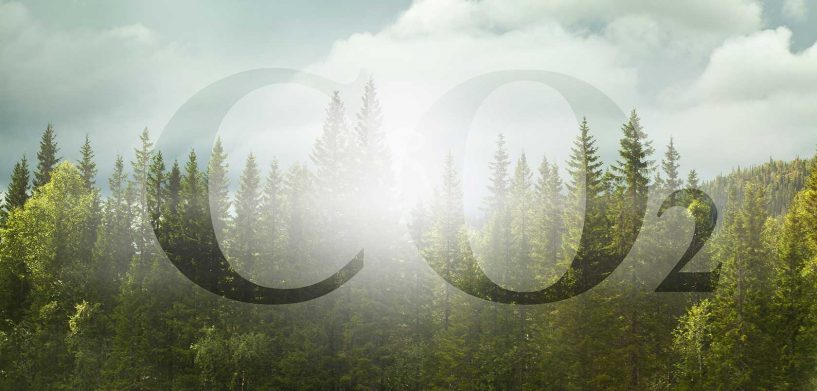On the heels of “International Reducing CO2 Emissions Day”, I think it’s timely to reinforce what I believe to be the biggest business opportunity of the 21st century. Seizing this opportunity requires a break from the status quo – adopting disruptive innovation that includes increasing levels of automation to full autonomy. This is key to accelerating profitable sustainability at scale.
My predecessor, Ola Rollén, laid out our strategy in his keynote speech at HxGN LIVE Global 2022. He delivered an unmistakable message about our current situation by naming the culprit aloud: all of us.
“This happened on our watch,” Rollén said, addressing the steep climb in CO2 levels since 1990. “We do not want to go down in history as the CO2 Generation, the generation that polluted this planet and destroyed it.”
His frankness in naming human activity as the primary source of excess carbon dioxide in the atmosphere was based on indisputable evidence, with data showing an ever-increasing rate of atmospheric CO2 since the Industrial Revolution and the massive spike beginning in the 1980s.
Ironically, hope came from new data attributed to the COVID-19 lockdowns. Emissions were shown to have reduced by up to 80% in some city centres, with global emissions falling by 5.4% in 2020 alone. The pandemic essentially became an experiment that regulations could never achieve, with a massive – and immediate – slowdown in emissions around the globe.
The solution to the complex puzzle of global climate change is obviously not a simple one. While the pandemic curbed emissions, global atmospheric CO2 levels resumed a steep climb in the post-pandemic rebound. Professor Petteri Taalas, President of the World Meteorological Organization, offered insight toward the end of 2020 on how the lessons learned from the pandemic could be applied to sustainability moving forward:
“The COVID-19 pandemic is not a solution for climate change. However, it provides a platform for more sustained and ambitious climate action to reduce emissions to zero through a complete transformation of our industrial, energy and transport systems. The changes needed are economically affordable and technically possible and would affect our everyday life only marginally. It is to be welcomed that a growing number of countries and companies have committed themselves to carbon neutrality,” Taalas said. “There is no time to lose.”
The urgency of the climate crisis places the responsibility solely at the feet of The CO2 Generation. At the current trends, global temperatures are expected to reach the critical threshold of 1.5⁰C above pre-industrial levels between 2030 and 2050. As a result, CO2 emissions will need to be reduced globally from 2019’s peak by about 7.5% every year to avoid this dire situation.
Where others may see an insurmountable obstacle, we see a unique opportunity to break from the CO2 Generation by empowering industry to chart a new trend – to maintain profitability and save the planet simultaneously. Creating systemic, sustainable change does not mean slowing down human industrial activity. It means enriching industry through technology that redirects efforts to more productive and less wasteful operations.
I am cognisant that I take this role as Hexagon’s President and CEO at a crucial time, and I am certain that we can rise above these historic challenges. Hexagon has been a leader in the field of Smart Digital Realities that unite the physical and digital worlds to put data to work in ways that go far beyond what was ever thought possible. Data is the critical ingredient to exploring, experimenting and implementing disruptive and unconventional methods that enable industry to meet sustainability challenges head-on.
One step we’ve taken to align our sustainability vision to action is the launch of R-evolution, the sustainable innovation and green-tech investment subsidiary of Hexagon. R-evolution leverages our sensors, software and autonomous solutions to run profit-driven, sustainable projects focusing on oceans, solar, wind and hydrogen. By leveraging our technologies, the company is motivating rapid change, profitably, while giving back to the planet.
But we won’t stop there and certainly can’t do it alone. While the CO2 Generation was all of us, it’s a label we can break away from. We can be the Sustainability Generation that saved the planet, but only if we all participate.
I hope you’ll join me as we develop an epicenter of thought leadership that connects aspirations to real-world results. Stay tuned!

















